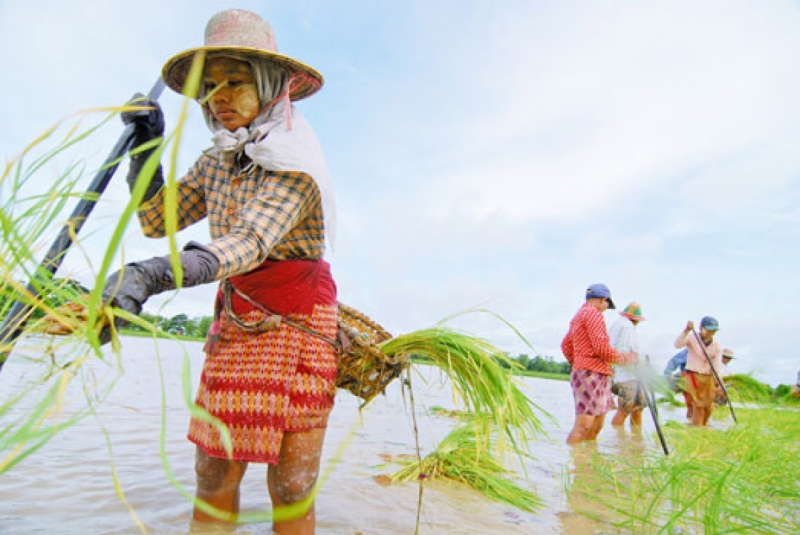




The price of rice has fallen dramatically over recent weeks leading farmers to call for an urgent intervention by authorities.
Farmers are struggling, U Thein Aung, chair of the Free Farmers Association, told The Myanmar Times. Prices began to fall when Indonesian buyers discovered pests in a shipment of rice from Myanmar, and refused to pay traders.
Summer rice was priced at up to K600,000 per 100 tins (each tin is equivalent to 9 gallons) until mid-March but is now worth just K450,000, leading some traders to stop buying the commodity altogether until prices rise, while others are taking a break for the annual water festival holiday.
At a press conference on April 5, farmers from Phyapon, Dedaye, Bogale, Maubin, Thapaung and Kyaiklat said they were suffering as a result of the low prices, and because traders are refusing to pay until after the Thingyan festival at the end of the month.
“The price plummeted in just a few days. Every time we have a good season farmers have to suffer from falling prices,” said U Thein Aung.
“The agricultural bank is sending letters demanding we repay our loans as well. Not only can farmers not afford to store the rice, but the price is too low to sell it. I wish authorities could come up with a solution.”
State-owned Myanma Agricultural Development Bank is one of the only affordable sources of funding for Myanmar’s farmer households. The bank has struggled with non-performing loans since flooding destroyed vast tracts of farmland last year.
“Even if the authorities are busy and this is not a good time to solve the issue, it would bring much relief for farmers even if the agriculture bank and other lenders could publish an announcement giving farmers until after Thingyan to repay their loans,” he added.
“For the long-term if farmers are offered loans and can sell their rice when the market is good, the situation would be fine. But it’s hard for them to sell at harvest time with whatever price they can get.”
Falling rice prices have also been impacted by the US dollar exchange rate. The kyat has strengthened this year by almost 10 percent against the dollar to K1192 yesterday. Those traders who have stored rice have played the market as a result, said U Myo Thura Aye, a rice exporter and member of the Myanmar Rice Federation. Last year, when the kyat reached 1300 to the dollar, imported fertiliser prices rose, pushing up the cost for farmers of growing summer paddy, they said.
“Our costs were higher this year compared with in previous years.
“Fertiliser was really expensive and we have had to pay more to reapers because they are in short supply,” farmer U Kyaw Htet from Tin Paung village in Dedaye township told The Myanmar Times.
“If we rent machines, it is expensive. Despite all this we thought we would be fine because the price of paddy was K600,000 per tin. Now it has fallen dramatically and not only this, there is no demand.”
The price of cultivating paddy this summer was between K250,000 to K300,000 per acre, around K50,000 more than last year, said farmers. Each acre can produce no more than 100 tins of rice. Farmers say if they sell the rice at little more than K400,000 per 100 tins, they cannot make enough to survive.
“An average farming family owns 10 acres of field, and will not make much more than K1 million in profit for this amount of land. How can we survive with K1 million, to meet basic needs and education costs? There are also many farmers who do not own that many fields,” U Thein Aung told reporters on April 5.
Moreover, in the past one tin was classified by traders as 46 pounds, but last year this increased to 49 pounds and for this year’s summer paddy, many are asking for 56 pounds per tin, said one farmer from Tharpaung village tract.
“The measurement has changed from 46 pounds to 56 pounds. If we had 1000 tins of paddy, this is a difference of 10,000 pounds, and we would lose payment for 100 tins,” he said.
“The loss of between K400,000 and K500,000 would be too much for a farmer. We are suffering from the way traders treat us, but we have no choice but to sell to them.”